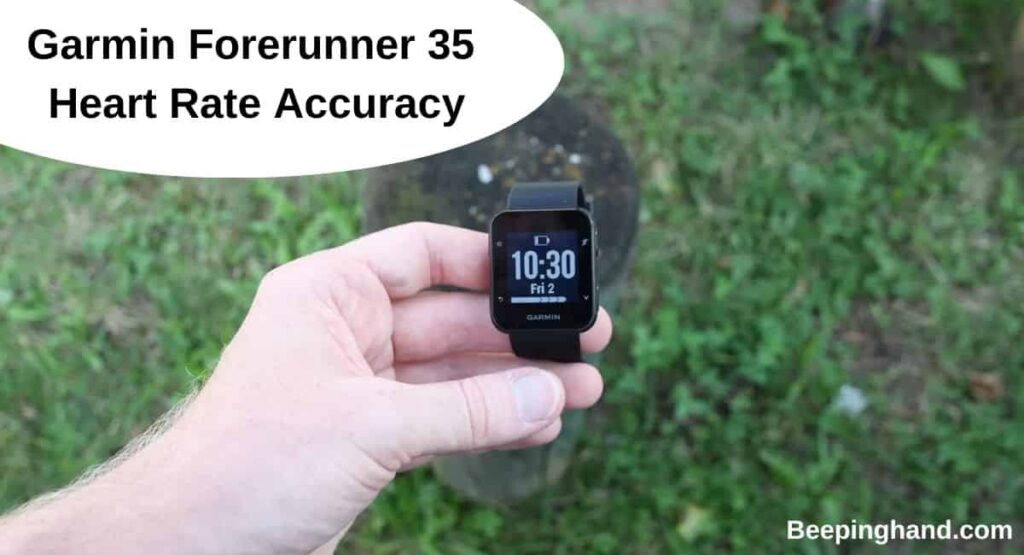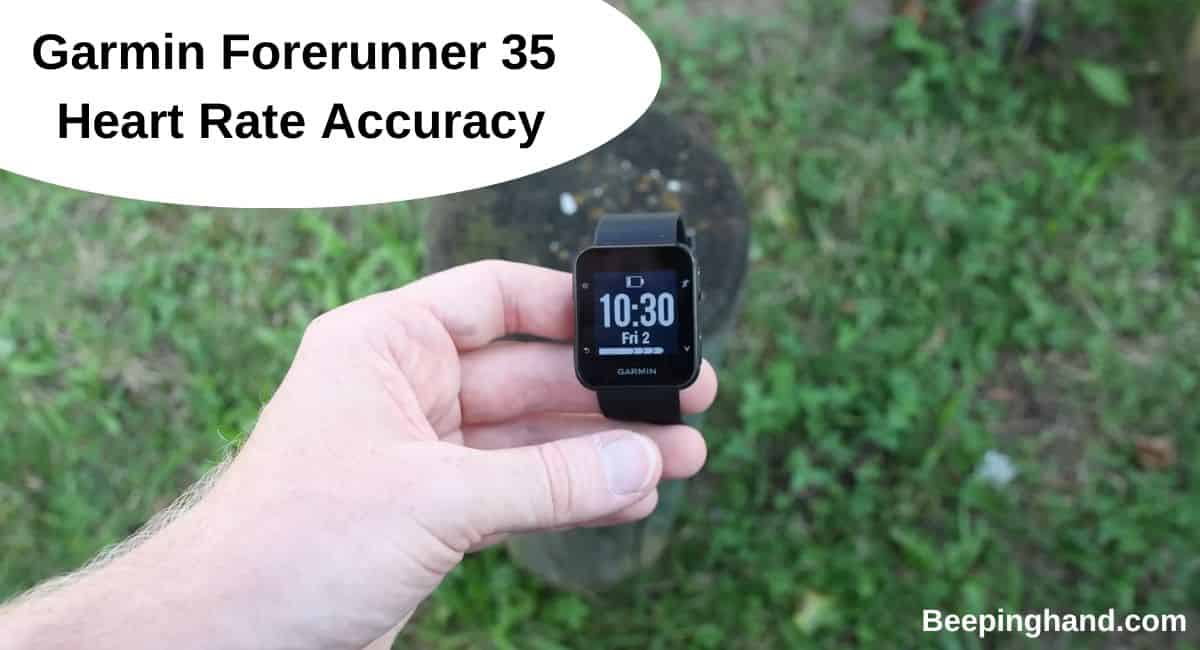The Garmin Forerunner 35 is a popular fitness watch that offers heart rate monitoring capabilities. Accurate heart rate readings are crucial for tracking and optimizing workouts, as well as monitoring overall cardiovascular health. However, some users have reported instances of inaccurate heart rate readings on the Garmin Forerunner 35, which can be frustrating and impact the effectiveness of their training sessions.
Here, we’ll explore the factors that can affect Garmin Forerunner 35 Heart Rate Accuracy and provide solutions to improve its accuracy.
Garmin Forerunner 35 Heart Rate Accuracy

Many users have experienced issues with inaccurate heart rate readings on this popular fitness Garmin watch. But worry not, we have shared the possible reasons as well as solutions.
Reasons for Inaccurate Heart Rate Readings on Garmin Forerunner 35
Here are some common reasons for inaccurate heart rate readings –
- Incorrect placement – Ensure that you are wearing the watch snugly on your wrist, positioned correctly about an inch above your wrist bone. A loose or improper fit can lead to inaccurate readings.
- Skin contact – Make sure the sensor on the back of the watch is in direct contact with your skin. Any dirt, sweat, or moisture on your skin or the sensor can interfere with the accuracy of the readings.
- Environmental factors – Extreme temperatures, humidity, or dryness can impact the performance of the heart rate sensor. Ensure that the watch is not exposed to extreme conditions that may affect its accuracy.
- Motion artifacts – Intense movements or improper wrist positioning during exercise can cause motion artifacts, resulting in inaccurate heart rate readings. Keep your wrist steady and avoid excessive movement when monitoring your heart rate.
- Battery level – If the battery level is low, it can affect the performance of the heart rate sensor. Ensure that your Garmin Forerunner 35 has sufficient battery charge for accurate heart rate monitoring.
- Firmware and software updates – Outdated firmware or software on your watch can impact heart rate accuracy. Keep your device up to date with the latest firmware and software releases from Garmin.
Also Read: Steps to Reset Garmin Watch
Solutions to Improve Garmin Forerunner 35 Heart Rate Accuracy
Here are some solutions to Improve Garmin Forerunner 35 Heart Rate Accuracy –
- Proper Placement and Fit – Adjust the strap for a comfortable and snug fit, ensuring the heart rate sensor maintains consistent contact with your skin.
- Cleanliness and Moisture – Regularly clean the sensor on the back of the watch with a soft, lint-free cloth to remove any dirt. Make sure your skin is clean and dry before wearing the watch.
- Calibration and Personal Settings – Perform a manual heart rate test using an external heart rate monitor and compare the results to those on your Forerunner 35.
- Environmental Considerations – Avoid extreme temperature conditions that may affect the watch’s performance. Ensure it is not exposed to excessive heat, cold, or humidity.
- Motion and Wrist Positioning – Keep your wrist steady and minimize excessive movement during exercise to reduce motion artifacts that can interfere with heart rate readings.
- Software Updates – Regularly check for firmware and software updates for your Garmin Forerunner 35. Install the latest updates to ensure optimal performance and accuracy.
Garmin Forerunner 35 Heart Rate not Working
Here are some steps you can take to fix the issue –
- Ensure that the watch is snug but comfortable on your wrist, and the optical heart rate sensor on the back is in contact with your skin. A poor fit can lead to inaccurate readings.
- Dirt, sweat, or lotion residue on the sensor can affect accuracy. Gently wipe the sensor on the back of the watch with a clean, dry cloth.
- Sometimes, a simple restart can resolve minor issues. To do this, press and hold the light button (located at the top left) for 15 seconds, and your watch should restart.
- If the watch is loose on your wrist, it can impact the heart rate sensor’s performance. Make sure the band is snug.
- A low battery can impact sensor accuracy. Ensure your watch has sufficient battery life.
Wrapping Up
This article is all about Garmin Forerunner 35 Heart Rate Accuracy. Maintaining accurate heart rate readings on the Garmin Forerunner 35 is crucial for monitoring your fitness and optimizing your training. While occasional inaccuracies may occur, there are several steps you can take to improve the accuracy of the heart rate measurements.
I hope this article was helpful to you and if you still find any queries then you may ask in the comment box. For more information visit the Help and Support Page.
FAQ’s Garmin Forerunner 35 Heart Rate Accuracy
Why is my Garmin Forerunner 35 showing inaccurate heart rate readings?
Inaccurate heart rate readings on the Garmin Forerunner 35 can be caused by factors such as improper fit, sensor interference, or poor contact with the skin
How can I ensure a proper fit for accurate heart rate readings?
To ensure a proper fit, make sure the watch is snug on your wrist, but not too tight. The sensor should be in contact with the skin and positioned on the underside of your wrist, above the wrist bone.
What should I do if my heart rate readings are consistently inaccurate?
If you’re experiencing consistent inaccuracies, try cleaning the sensor and making sure it’s free from dirt or sweat. Additionally, adjusting the tightness of the strap or trying an alternative placement on the wrist might help.
Can external factors affect heart rate accuracy?
Yes, external factors such as cold weather, dry skin, excessive movement, or interference from other devices can affect heart rate accuracy. Be aware of these factors and make adjustments accordingly.
Should I contact Garmin customer support if my heart rate readings are consistently inaccurate?
If you have tried the troubleshooting steps and are still experiencing inaccurate heart rate readings, it’s recommended to contact Garmin customer support. They can provide further assistance and guidance tailored to your specific situation.
